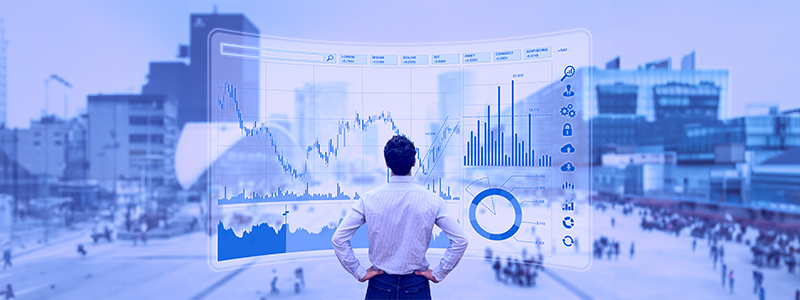
What is Data Capture? Process, Benefits, and Applications
Data is generated constantly—from customer purchases to inventory updates. But just collecting it isn’t enough; the key is capturing and processing it quickly and accurately to generate insights. With the AIDC market expected to grow from USD 63.2 billion in 2024 to USD 165.8 billion by 2033, businesses are recognizing the importance of smarter data capture. With the right tools, companies can turn raw data into valuable insights, improve operations and make informed decisions.
What is Data Capture?
Data capture refers to the process of extracting information from various document types, whether paper or digital, and converting it into a machine-readable format for business use and analysis.
Traditionally, the data capture process was time-consuming and error-prone, requiring data entry specialists to sift through the pile of documents and manually enter the relevant information into business systems.
With advancements in technology, the data capture process can be automated. Technologies like Optical Character Recognition (OCR), Artificial Intelligence (AI), and Machine Learning (ML) automatically extract information from diverse document types, reducing manual effort and accelerating processing time.
Methods of Data Capture
Data capture includes several methods and technologies, some of which are:
1. Manual Data Entry
Manual data entry involves individuals directly inputting data into a system, typically by transcribing information from physical documents or forms. While this method ensures accuracy when handled carefully, it is time-consuming and prone to human error. It is best suited for small-scale or one-off data collection tasks where automation isn’t required.
2. Automated Data Capture
- OCR (Optical Character Recognition)
OCR is a technology that automatically captures data from scanned documents by recognizing printed text and converting it into a digital format. It is widely used for extracting information from paper documents such as invoices, receipts, and forms, reducing the need for manual input and improving speed and accuracy. - ICR (Intelligent Character Recognition)
ICR is an advanced version of OCR designed to recognize and interpret handwritten text. It can handle different handwriting styles and is ideal for capturing data from handwritten forms, applications, and surveys. ICR increases automation by processing more complex, unstructured data than OCR alone. - IDP (Intelligent Document Processing)
IDP combines OCR, ICR, machine learning, and natural language processing to handle unstructured and semi-structured documents. It understands the context of documents such as contracts, invoices, and emails, automatically categorizing and extracting relevant data points. IDP is used for more complex documents, improving automation and accuracy in the data capture process.
3. Web Scraping
Web scraping is an automated method of capturing data from websites using software or scripts. It is particularly useful for extracting real-time data such as product listings, stock prices, or news updates. Web scraping enables businesses to gather large volumes of data quickly from online sources for analysis or trend monitoring.
4. Barcode and RFID Scanning
Barcode and RFID scanning technologies are used to capture data from physical objects. Barcodes are scanned using optical readers, while RFID tags transmit data wirelessly. These methods are commonly employed in inventory management, asset tracking, and retail to quickly and accurately capture product details and streamline processes.
5. Mobile Data Capture
Mobile data capture uses smartphones or tablets to collect data in the field. It’s especially useful for inspections, surveys, or inventory checks, where users can instantly capture data and upload it to central systems. This method ensures real-time data collection and eliminates the need for paper-based forms or manual entry.
How does Data Capture Work?
The data capture process involves a series of steps to ensure the data is accurate and ready for analysis. Here’s a breakdown of how it works.
- Identifying Data Sources: The process begins by identifying where the data will come from, such as physical documents, digital files, or online forms. Each source is carefully evaluated to understand the type of data and how best to collect it. Properly categorizing these sources ensures that the right technology and tools are applied to handle them effectively.
- Collecting Data: The next step is to gather the information. This may involve scanning paper documents, importing digital files, or capturing input from web forms. Efficient data collection ensures that no data is lost during the transfer and is quickly available for processing.
- Extracting Information: This step involves pulling relevant information from the documents, ensuring that only useful information is kept. For physical documents, technologies like OCR convert text into machine-readable data, while structured digital files are mapped directly into the system. This process transforms raw data into meaningful insights by focusing on critical data points.
- Validating Data: The system validates the extracted data to ensure its accuracy and consistency with existing records. This step checks for discrepancies, missing fields, and incorrect entries by comparing the data to predefined rules or external databases. Data validation reduces errors and ensures that only high-quality data proceeds to the next phase.
- Structuring Data: Once validated, the data is organized and formatted to fit specific system requirements. This can involve standardizing units of measurement, breaking down information into discrete fields, and ensuring compatibility with other data systems. Structuring data in this way makes it easier to store, retrieve, and analyze as needed.
- Storing Data: The final step is securely storing the structured data in a central repository, such as a database or data warehouse. With the data now organized and validated, it is easily accessible for analysis, reporting, or further integration with other business systems. This step ensures that valuable data is kept safe and ready for future use.
Benefits of Automated Data Capture
Automated data capture is the future of document data extraction. It is a highly scalable process and easily manageable. It also reduces time to insight, enabling enterprises to make decisions quickly. Businesses that employ this method can reap several benefits:
- Improved Accuracy: One of the biggest benefits of automation is how it eliminates human errors. Manual data entry is prone to mistakes like missed figures or incorrect entries, but with automation, you can trust that the data is captured accurately every time. That means that organizations work with high-quality, reliable data from the start, which leads to better decision-making down the road.
- Cost Savings: Automating data capture saves time and significantly cuts down on labor costs. With fewer errors to fix, enterprises avoid costly corrections, making the whole process much more cost-effective in the long run.
- Informed Decision-Making: With automated data capture, organizations no longer have to wait hours or days to gather data. It’s all instantly available, accurate, and ready to go. This means leaders can make quicker, better-informed decisions based on the most up-to-date information, giving businesses a competitive edge in a fast-paced market.
- Centralized Access: Automation helps bring all the data together in one place, making it easy to access whenever anyone in an organization needs it. No more sifting through files or hunting down scattered documents—everything is digitized and stored in a way that’s organized and easy to retrieve. This centralized access boosts collaboration, helping teams work more efficiently together.
Industries that use Automated Data Capture
Automated data capture is becoming an important tool in many industries, helping businesses streamline processes, reduce errors, and improve efficiency. Let’s take a closer look at how some key industries use automated data capture:
-
Healthcare
In healthcare, automated data capture helps improve operations and ensure accurate patient care. It reduces the risk of errors and makes sure important data is captured quickly and correctly:
- Digitizing Forms: Patient intake forms, prescriptions, and medical records are processed automatically, reducing manual data entry and mistakes.
- Electronic Health Records (EHR): Key patient information is updated automatically in EHR systems, ensuring healthcare providers have the most up-to-date data.
- Medical Claims Processing: Insurance documents are captured automatically, speeding up the claims process and getting reimbursements to providers faster.
-
Financial Services
The financial services industry uses automated data capture to improve customer service, speed up processes, and stay compliant. This technology helps save time and ensures accuracy:
- Loan and Mortgage Processing: Data from loan applications and supporting documents is automatically captured and checked, speeding up approval and reducing delays.
- Insurance Claims: Automated data extraction from policy documents and claims helps process them faster, leading to better customer satisfaction.
- Compliance: Scanning and organizing regulatory documents automatically ensures compliance, reducing the chance of mistakes and saving time.
-
Retail and E-Commerce
Retailers and e-commerce businesses use automated data capture to improve customer experience and streamline inventory and order management:
- Inventory Management: Barcodes, RFID, and OCR help track products in real-time, preventing stock errors and keeping shelves well-stocked.
- Customer Orders: Customer information is automatically captured during checkout, speeding up the process and reducing order errors.
- Product Information Management: Product details are automatically pulled from suppliers, reducing the need for manual updates and keeping product info consistent.
Simplify Data Capture using Astera
Automation is essential for businesses seeking to capture information from a variety of document formats, whether structured, unstructured, or semi-structured. As a result, organizations are increasingly adopting automated data capture solutions to improve data accuracy and streamline their operations.
Astera is a leading solution that empowers businesses to streamline their data processes. With its advanced automated document processing capabilities, Astera uses AI to capture data from a variety of document types, including PDFs and scanned images. It uses Optical Character Recognition (OCR) and Intelligent Document Processing (IDP) technologies to convert unstructured data into structured, actionable information, allowing businesses to make informed decisions with ease.
If you’re looking for a solution that enhances accuracy, reduces operational costs, and improves productivity, Astera is the tool you need. Contact our experts today to discover how Astera can help you drive greater efficiency and business success.
 Astera AI Agent Builder - First Look Coming Soon!
Astera AI Agent Builder - First Look Coming Soon!

